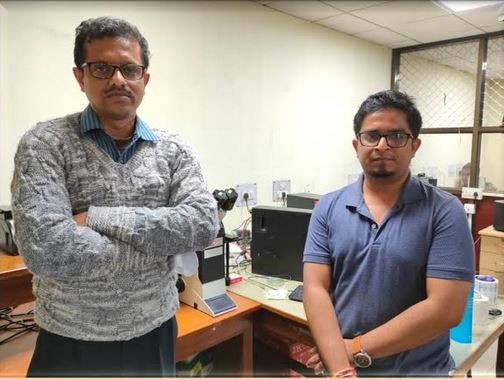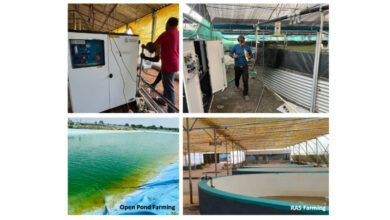
New Delhi : Indian Institutute of Technology (IIT), Guwahati researchers have developed an advanced technique for rapid evaporation of droplets. It is a novel method of controlling the overall lifetime of droplet. The inferences drawn from this study could have far-reaching implications ranging from biomedical engineering to biological sample diagnostics, ink-jet printing, surface patterning and many more, say researchers.
“We have seen in our daily life that fluids are transported either by using pumps and compressor, but with the advent of miniaturization, a small fluid volume can be transported whatever the distance it is, from one place to another place, using default either driving mechanism. Our research work is focusing on the manipulation of the small fluid volume using an externally applied magnetic field. This aspect of the field dynamics research is known as magnetofluidics. We have developed a new state of the art method of mixing using externally applied magnetic fields of two different fluid volumes”, says Dr. Pranab Kumar Mondal, Assistant Professor, Department of Mechanical Engineering, IIT Guwahati.
“Mixing is important especially in the area of diagnostics. Very often we need to go to a pathological centre for diagnosis, but for the proper diagnosis, collected samples are needed to be mixed for different reasons. Our research will provide a new direction towards the development of a portable as well as cost effective device for the efficient mixing of fluid samples”, Dr. Mondal explains.
Also, using this magnetofluidics based technique researchers have explored a new avenue for controlling evaporation of small fluid volume. The evaporation of fluid volume is critical especially in applications such as inkjet printing, DNA patterning, and surface patterning. Researchers have established in their recent study that using magnetic particles of small volume fraction and the externally applied magnetic field, the evaporation rate of small fluid volume can be expedited.
With the advent of miniaturization, the effective transfer of mass between species has attracted significant attention of global communities because of its wide range of industrial applicability. In particular, rapid evaporation and mixing between droplets have an extensive range of engineering applications such as biological sample diagnostics, ink-jet printing, surface patterning and many more.
Researchers have found that by tuning the strength of applied magnetic field as well as its frequency, it is possible to have precise control over the lifetime of the droplet containing suspended magnetic nanoparticles, which is an important area of biomicrofluidics. The research has shown that the evaporation rate of the droplet can be effectively controlled by varying the applied magnetic field frequency.
The results of this study have recently been published in the Soft Matter journal belonging to the Royal Society of Chemistry. The research team comprised of, apart from Dr. Pranab Kumar Mondal, his Ph.D. scholar, Sudip Shyam and Dr. Balkrishna Mehta (Presently at Department of Mechanical Engineering, IIT Bhilai).
(India Science Wire)






